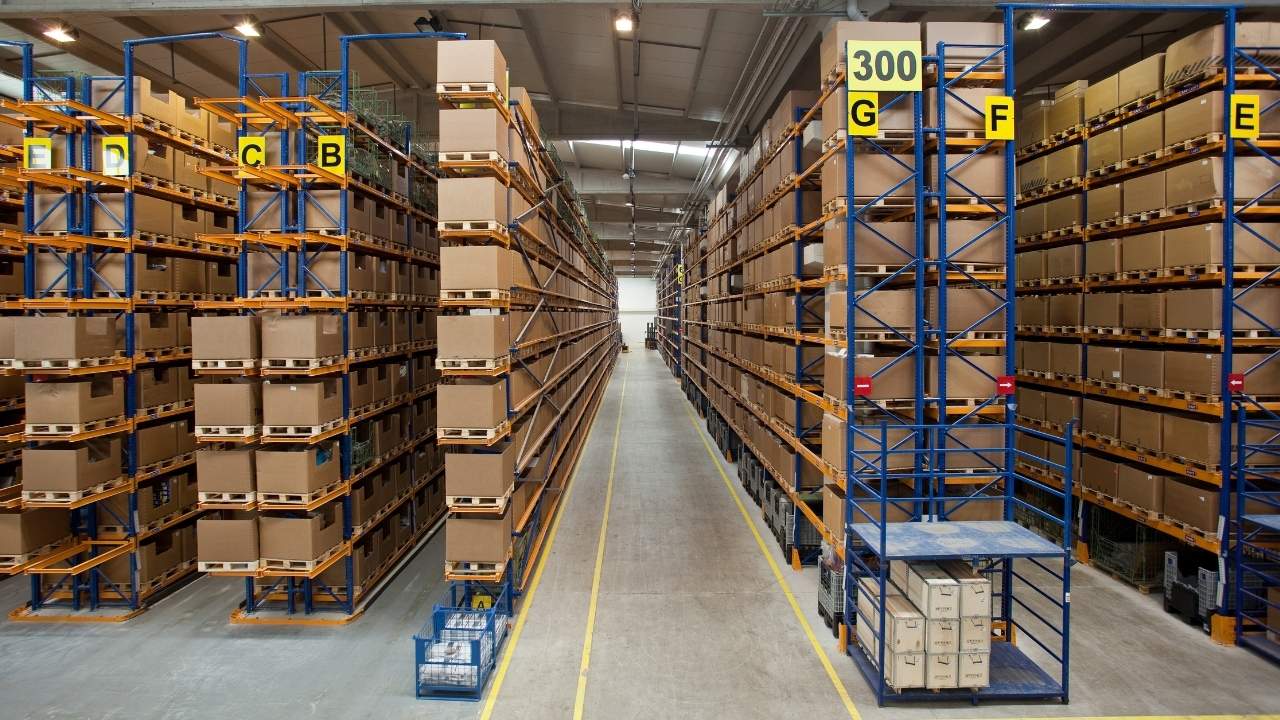Integrating an ERP system with Shopify is a strategic move for modern businesses aiming to streamline operations and enhance efficiency.
As your Shopify store attracts more customers, effectively managing inventory and order fulfillment becomes vital yet increasingly complex. Without scalable processes in place, stockouts, shipping delays, and transparency issues can quickly erode customer loyalty and revenue growth.
This guide shares actionable tips to help Shopify sellers master critical operations including:
- Implementing reorder point formulas to trigger timely replenishment
- Balancing multichannel inventory through dropshipping and centralized warehousing
- Leveraging packing automation to accelerate shipping workflows
- Monitoring supplier lead times and safety stock to minimize backorders
- Providing order status visibility through shipping integrations
With the ERP Solution, you can confidently scale your Shopify operations while providing a seamless buying experience.
ERP Strategies and Techniques to Optimize Shopify Stock Levels and Enhance Customer Satisfaction
Shopify+ERP Integration: Optimizing Inventory Management
The foundation of managing order volume is having a firm grasp on existing inventory. Shopify provides built-in functionality to track stock counts across your products. Here are key features and workflows to leverage:
- Establish Inventory Tracking
The first step is enabling inventory tracking within Shopify. You can toggle this on at the product level and specify details like SKU, quantity, and warehouse location. It’s critical to keep these counts synced with your actual physical inventory.
Versa Cloud ERP has an Inventory Tracking Mechanism for businesses with a Shopify Store. With the capability of tracking the inventory in the warehouse and then pushing the inventory data to the Shopify Store. In addition, Versa is also capable of pulling inventory from Shopify and adjusting inventory in Versa to match Shopify.
Shopify has 3 major numbers related to inventory:
- Quantity on Hand
- Committed Quantity
- Available Quantity
- Integrate with Fulfillment Centers
If you use a third-party logistics provider or fulfillment center, you can integrate with their inventory system. This automatically synchronizes quantities across systems. Shopify partners with leading WMS platforms to streamline this data sharing.
With the Shopify and Versa Cloud ERP Integration, businesses can also track inventories that are not owned but the business still wants to track the visibility of. Users can create a facility in Versa designate it as third-party-owned and connect it to the supplier’s system to keep the inventory in sync.
-
Manage Multiple Variants
When a product has several variants – for example, different sizes and colors for a t-shirt – inventory needs to be tracked at the variant level. Careful configuration of variants facilitates this while also exposing the right purchase options to customers.
In Versa Cloud ERP users can set up a parent product as a non-inventoried product with multiple inventoried variants in the system, and this information is published to Shopify.
-
Avoid Overselling
Make sure your inventory quantities are always up-to-date across purchasing channels to avoid taking orders that exceed availability. This prevents canceling orders after the fact, which frustrates customers. Third-party apps provide added functionality for advanced reporting, demand forecasting, and warehouse workflows. Just make sure to thoroughly evaluate integrations to ensure reliable performance.
The PO Planner function in Versa Cloud ERP enables customers to tell the ERP system about the minimum and maximum quantities in the system. This is assigned at the product level, which makes sure the business does not run out and always maintains a quantity to keep the business running smoothly.
- Balancing Supply and Demand
The biggest inventory challenge is balancing supply and demand. Even with good visibility and planning, it’s likely you’ll experience stock-outs from time to time. When quantities can’t cover incoming orders, how should you prioritize?
- Allocate Inventory
When an item is back-ordered, you can allocate incoming inventory to orders. It’s best to fulfill the oldest unshipped orders first to avoid excessive delays. Transparent communication also helps ease customer concerns.
-
Manage Backorders
Rather than cancel orders, you can set Shopify to backorder out-of-stock purchases. This holds the order until inventory returns without the customer having to reorder. However, make sure to set a maximum wait time before releasing inventory.
- Allow Preorders
For releases of hot new products, preorders can help gauge demand. Just be conservative with estimates and quantities. You don’t want to offer preorders you can’t reasonably fulfill promptly upon arrival. Dropshipping is another option for supplementing limited inventory. By fulfilling orders directly from a supplier, you can provide products you don’t physically stock. Just know that shipping times, quality, and branding are harder to control.
Shopify+ERP Integration: Streamlining Fulfillment Workflows
Accurate inventory tracking sets the foundation for order fulfillment. However, the actual process of managing orders, packing shipments, and getting them to customers introduces additional complexity. Here are tips for simplifying these workflows:
- Configure Shipping Options
Make sure to define all of your supported shipping methods and zones within Shopify. This automatically shows customers their options and rates during checkout. You can set different lead times, prices, weights, and origins per method.
- Create Shipping Presets
Presets allow you to define packaging types, rates, and service levels that you frequently use. With a few clicks, you can add these defaults to orders without having to look up details each time.
- Set Up Packing Stations
Designate parking areas near your inventory warehouse to avoid wasted motion and effort. Make sure to equip stations with the necessary supplies and tools to efficiently assemble orders for shipping.
- Print Orders and Labels
Shopify enables one-click printing of order details, packing slips, invoices, and shipping labels to keep fulfillment moving smoothly. Third-party apps also help batch this process.
-
Streamline Documentation
Have all necessary customs/duties paperwork, commercial invoices, and other export documentation prepared in advance. This avoids shipment delays due to missing information.
- Consider a Fulfillment Center
If order volume grows beyond your capacity, a third-party logistics (3PL) provider can take over storage, picking, packing, and shipping on your behalf. This relieves internal bandwidth constraints. Just make sure to thoroughly vet partners.
Carefully evaluate any new apps, customizations, or workflows before roll out to ensure they integrate properly without disrupting existing operations.
-
Mastering Omnichannel Fulfillment
A key priority is ensuring consistent product availability and ordering experience across all sales channels – whether selling online, in brick-and-mortar stores, via marketplaces, or through other e-commerce integrations. Unifying business systems facilitate this while avoiding overselling inventory that has already been allocated to pending orders.
- Connect In-Store and Online Sales
The Shopify POS system seamlessly integrates with your e-commerce backend. Having a unified view of inventory and order status ensures customers don’t purchase out-of-stock items. In-store pickup also helps align online and offline operations.
The integrations in Versa Cloud ERP enable businesses to maintain POS and multiple eCommerce platforms such as Shopify all from one solution.
- Allocate Inventory Across Channels
When selling on multiple marketplaces, make sure to configure listings to reserve inventory so it’s not also offered directly through your Shopify store. This prevents channel conflicts. Also, avoid listing products as both “in-stock” and via drop shipping.
- Evaluate Multi-Location Setup
If you have inventory distributed across multiple warehouses, a Shopify Plus account enables tracking quantities by location. This provides flexibility to ship orders from the most efficient point while consolidating stocks through internal transfers.
Careful channel management and alignment of policies help provide consistent product availability and messaging across customer touchpoints.
Conquering the Shopify Complexities with Versa Cloud ERP
For even greater command of your backend processes – from supply chain to accounting – innovative platforms like Versa Cloud ERP integrate directly with Shopify. Versa consolidates critical business data across systems and provides real-time visibility plus automation for workflows like inventory control, warehousing, and order processing.
Schedule a free demo today to learn how Versa Cloud ERP can help your thriving Shopify merchant business reach the next level while avoiding unnecessary chaos. Supporting efficient operations results in delighted customers that drive revenue growth through loyal repeat purchases and glowing referrals. By leveraging the right solutions, you can confidently scale new heights!
Empower your Shopify business with the knowledge to navigate the realm of an Integrated ERP solution, specifically tailored to logistics, inventory and warehouse management, and POS needs. Gain insights, streamline processes, and propel your financial management to new heights with this comprehensive guide
With Versa Cloud ERP’s Implementation guide learn how a business can ensure a successful ERP Solution Implementation. Navigate the complexities of implementation with confidence!
A Small Business in the modern day with Omnichannel Retail is complex and requires resources to deliver on its goals and achieve its full potential. To create a small business success story business owners need an ERP Solution that grows with them.
Effectively manage your financials, accounting, inventory, production, logistics, and warehouse management workflows with our award-winning ERP.
Let Versa Cloud Erp’s do the heavy lifting for you.
[widget id=”custom_html-40″]
[widget id=”custom_html-42″]
[widget id=”custom_html-30″]
Do Business on the Move!
Make your businesses hassle-free and cut the heavyweights sign up for the Versa Cloud ERP today!!
Join our Versa Community and be Future-ready with us.
[widget id=”custom_html-20″]






